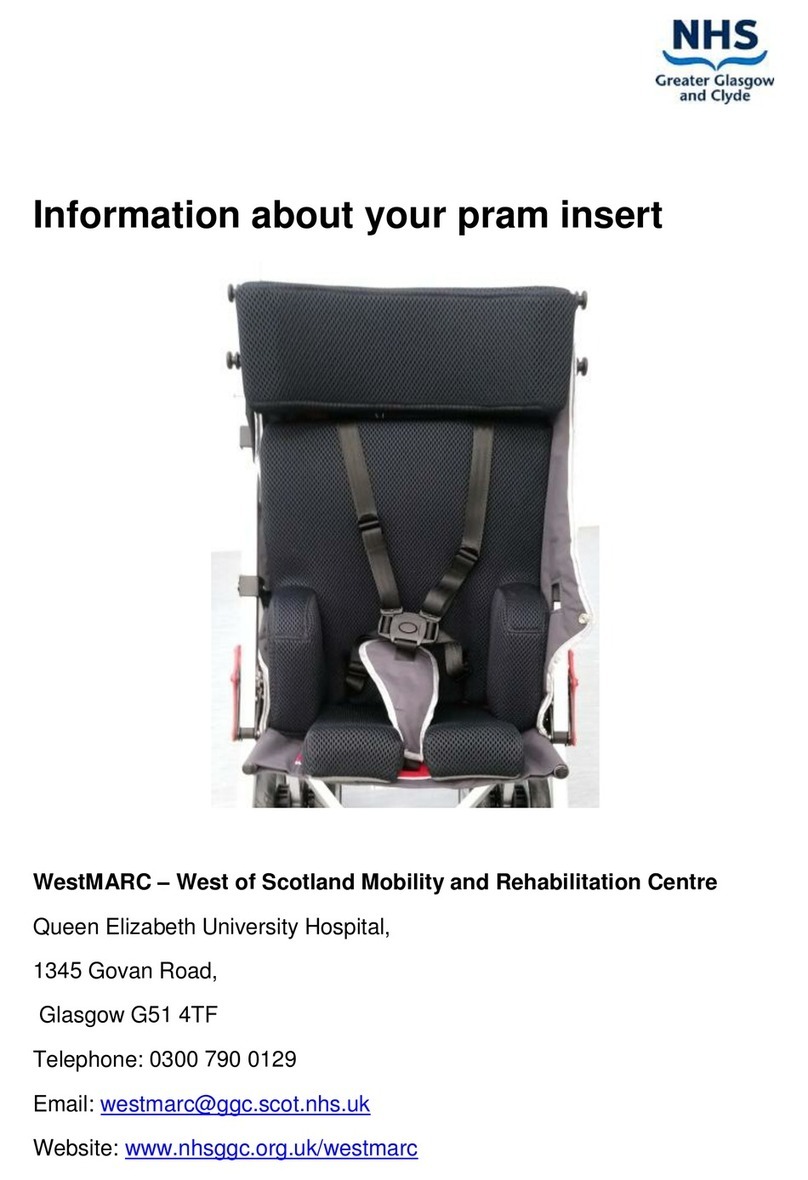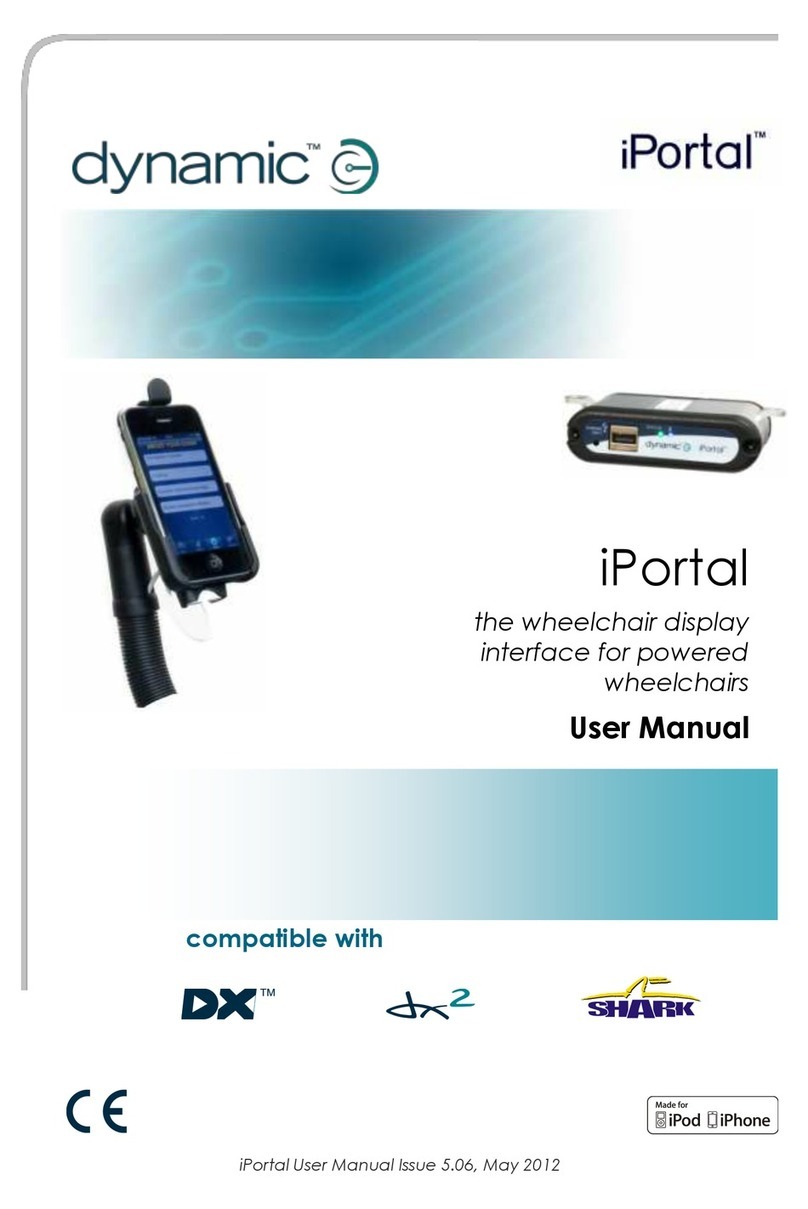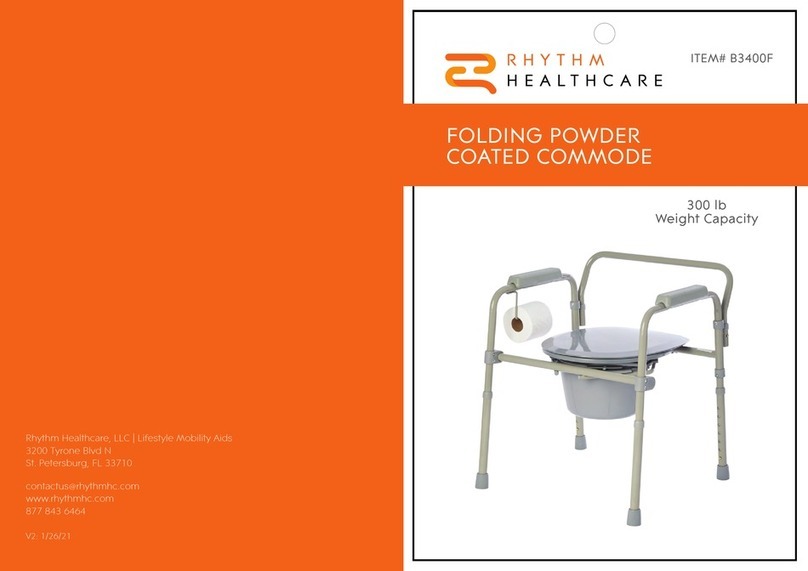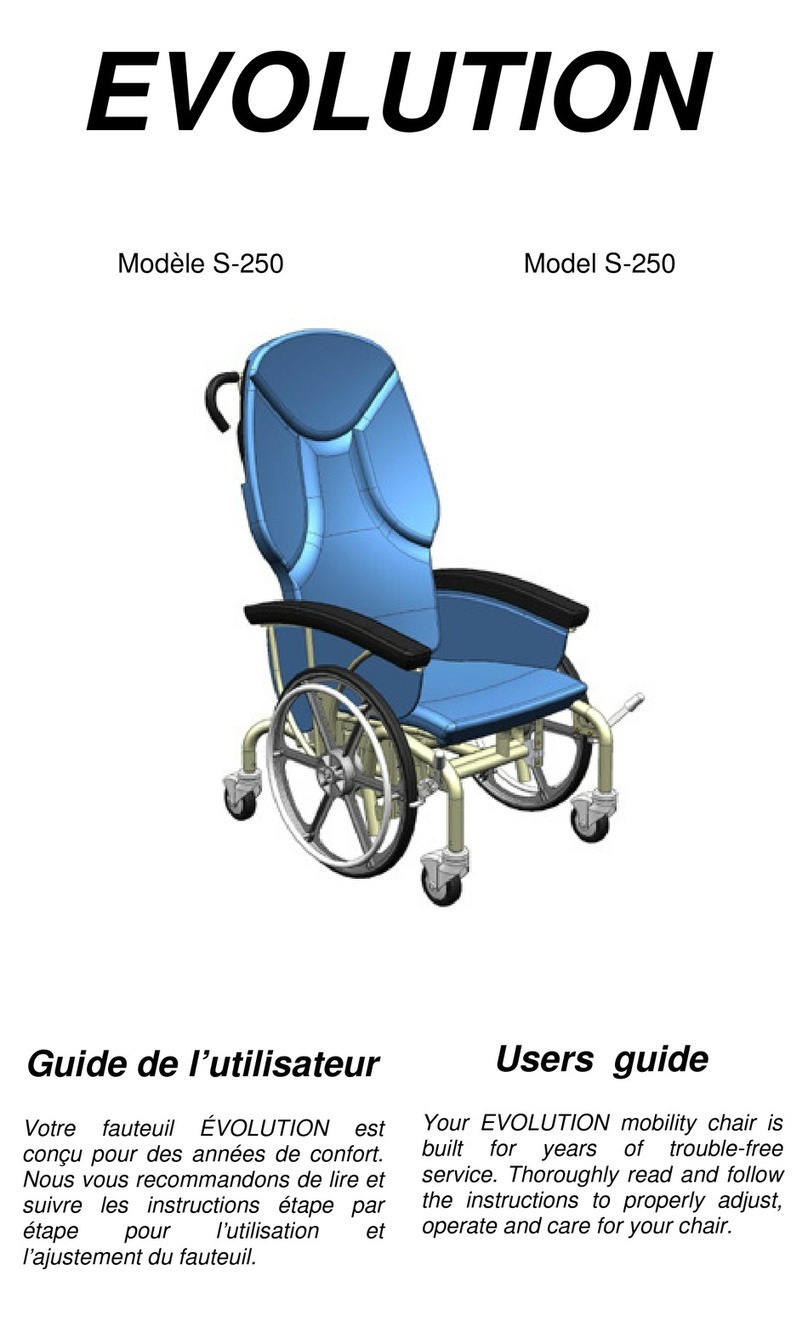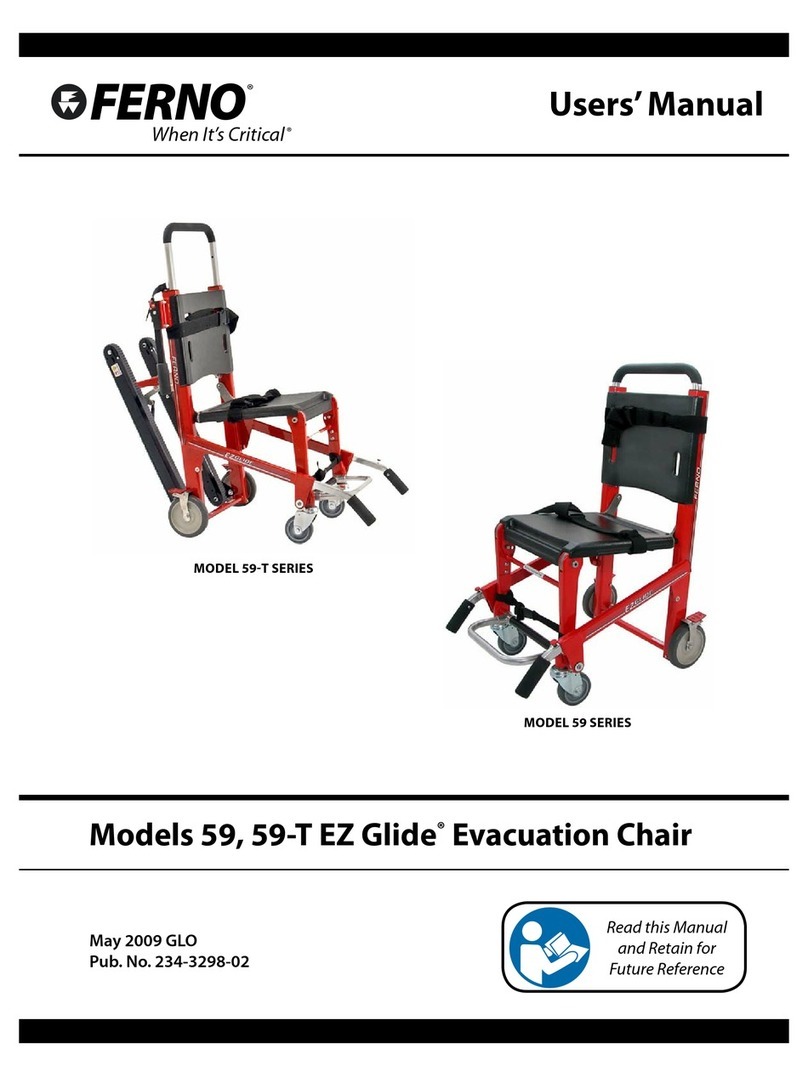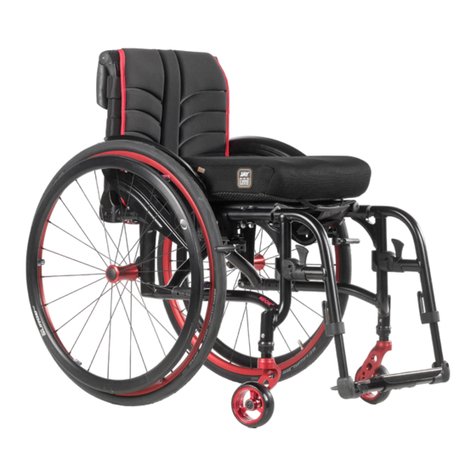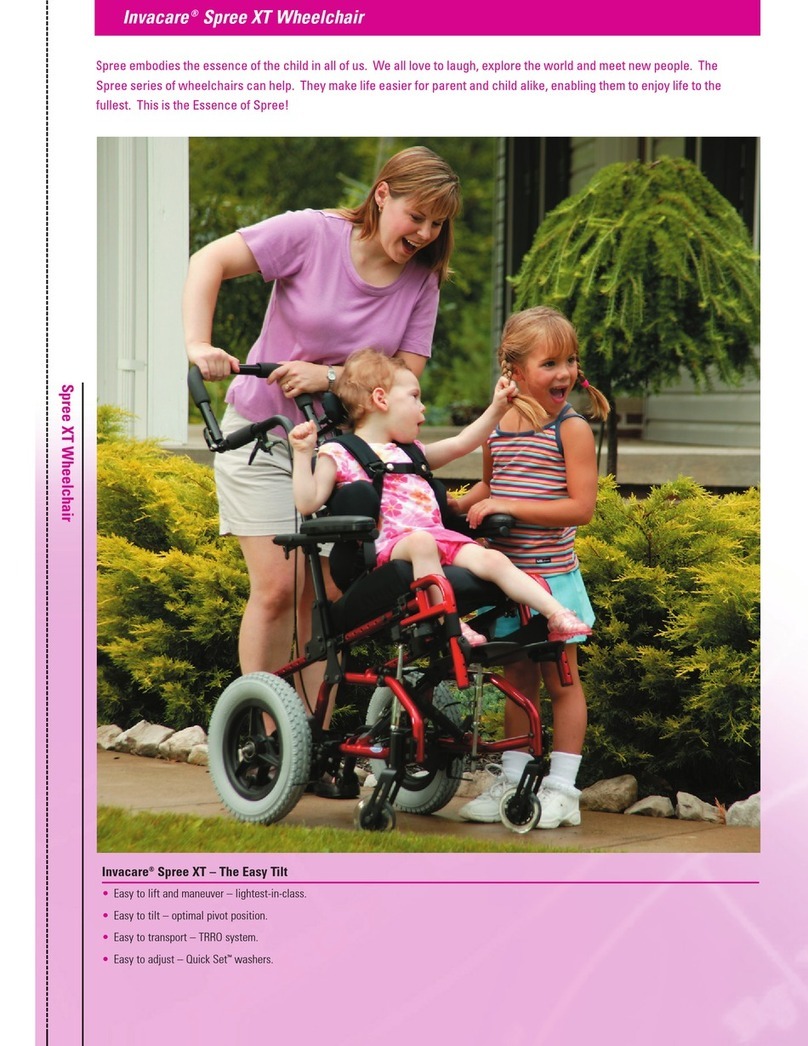NHS WestMARC User manual

WestMARC carved foam seat
User Manual
WestMARC
West of Scotland Mobility and Rehabilitation Centre
Queen Elizabeth University Hospital, 1345 Govan Road, Glasgow G51 4TF
Tel: 0300 790 0129
Email: W[email protected]
Website: www.nhsggc.org.uk/your-health/health-services/westmarc
This booklet contains important information which you must read before using
your new carved foam seat.

2
Contents
User Information_____________________________________________________________________ 3
Delivery Handover Check List__________________________________________________________ 3
Introduction_________________________________________________________________________ 4
Limitations of Use ____________________________________________________________________ 4
General Safety Guidelines _____________________________________________________________ 4
Components of the Seating System ____________________________________________________ 5
Care of Seating System _______________________________________________________________ 6
Weekly Checks ______________________________________________________________________ 6
Wheelchair Base _____________________________________________________________________ 6
Seat Shell ___________________________________________________________________________ 6
Seat Shell-Wheelchair Interface ________________________________________________________ 7
Disassembly and Assembly of Seat Shell on Wheelchair Base _______________________________ 7
Seat Shell-Cushion Interface ___________________________________________________________ 10
Seat Upholstery______________________________________________________________________ 11
Cushion Foam _______________________________________________________________________ 12
Pelvic Belt___________________________________________________________________________ 12
Headrest____________________________________________________________________________ 13
Additional Positioning Supports________________________________________________________ 13
Positioning Guide ____________________________________________________________________ 13
The Introductory Period and Recommended Usage_______________________________________ 15
General Pressure Care Advice __________________________________________________________ 16
Reasons to Request a Review of Your Seat _______________________________________________ 16
Fire Retardancy ______________________________________________________________________ 16
Stability of Chair _____________________________________________________________________ 16
Troubleshooting _____________________________________________________________________ 17
Use of Seat in Transport_______________________________________________________________ 18

3
User Information
WestMARC Patient Reference Number
Current User
Weight
Combined weight of
wheelchair and user
WestMARC
Wheelchair
Number
Type of carved foam
supplied
Seat cushion only
Backrest only
Seat and back
cushion
Date of Supply Wheelbase Type
Delivery Handover Check List
For completion by WestMARC staff
Given advice on positioning within new seat
Given instruction on use of positioning equipment e.g. straps and headrest
Given advice on tie down of chair in transportation
Given advice on the use of seat in transportation (including headrest)
Given advice on length of time using new seat and checking skin for pressure marking
Given instruction of how cushions, cushion covers and positioning straps fit in seat, to
allow cleaning
Given advice on wheelchair and seat stability
Given instruction on how to remove and refit seating from wheelbase, if appropriate
Given all new provided equipment guides and completed the required detail
Given advice on cushion covers supplied with seat
Delivery WestMARC staff signature……………………..……………………… Date: ………...........…
User agreement signature ………………………………………………………. Date: ………...........…

4
Introduction
Depending on your specific requirements, your carved foam seat may consist of:
• A seat cushion
• A back cushion
• A combination of seat and back cushion to make a complete seat
This carved foam seat has been cast and made to your shape and requirements.
This should allow you to:
• Be comfortable
• Be able to function
• Take care of your skin
• Support your posture
Only you should use this equipment, as it has been made specifically for you.
Your carved foam seat has been prescribed by WestMARC staff and only they should adjust it.
Please take some time to read this user manual and any additional documentation supplied
with your new equipment, to make sure you use it safely and correctly.
Limitations of Use
This seat is to give you supportive seating in a wheelchair and you should only use it whilst you
need mobility. Do not use it to replace other pieces of alternative static supportive equipment in
the home, or other environment, such as a comfy static chair or a rest in your bed.

5
General Safety Guidelines
Seat Function
Sit in the seat in the position shown to you at the clinic and securely fit positioning
straps where used.
If the seat is not giving you good support then please contact WestMARC.
Monitor your skin and, if using your seat causes changes in your skin marking, contact
WestMARC. As with any device used to control posture, inspect your skin regularly for
reddening or other pressure marks.
Make sure devices fitted e.g. headrest and harness straps are in good working order
and are not causing a hazard when fitted.
Stability
Use the wheelbase brakes when:
• transferring into and out of the equipment
• fitting seating to wheelbase or
• you are stationary and during vehicle transportation
Use your anti-tippers, when fitted:
• when transferring into the chair
• if the chair is tilted back
• the chair is stationary
• if you are concerned about the stability of your equipment
Use of a seating system within a wheelchair may affect the stability of your
wheelchair. Take additional care when going up or down slopes and kerbs. If you or
your carer requires extra advice please contact WestMARC.
If possible park the chair on a level surface.
Use caution when you are using the tilt function when going up or down slopes.
Do not hang or fit additional equipment to the chair if this was not assessed during
your chair delivery. E.g. additional bags or medical equipment hanging from the push
handles can affect the stability of your chair.
Maintenance
Regularly check your WestMARC carved foam seat, positioning equipment and
wheelbase for loose or damaged parts. Please contact WestMARC promptly to
arrange for a repair or replacement.
Make sure you keep your seat upholstery, cushion foam, wheelchair and seating
clean and dry.

6
Components of the Seating System
Please Note:
The above pictures are for illustration purposes only.
Your WestMARC carved foam seat may not have all of the components shown above, as it is
prescribed to meet your individual needs.
Care of Seating System
Every time you are about to use your chair, visually check it for:
• any loose or missing nuts and bolts
• brackets that are out of line or unusual wear and tear around attachments
If any part of the seating system is loose, out of line or missing, please contact WestMARC for
advice.
After removing and remounting your seat it is important to make sure that all securing knobs and
clamps are secure and tight and that the seating system is set-up in the same way it was originally
given to you.
Weekly Checks
• Inspect the seat for any signs of damage
• If dirty, clean seat and or wheelbase
• Wash and dry removable covers according to material instructions given below
• Check fixtures for seat shell are tight and not loose
• Check that any webbing straps are securely attached and have not been damaged
• Check the pelvic belt buckle closes and locks
• Check cushions are in the correct position
Headrest
Chest Harness
Back Cushion
Wheelchair Base
Pelvic Belt
Seat Shell
Wheelchair Interface
Seat Cushion
Seat Shell

7
Wheelchair Base
Please use your equipment and care for it, by following the wheelchair manufacturer guidelines
you receive with the wheelchair.
Seat Shell
Your WestMARC carved foam cushions may be supported within a hard shell to give extra support
for the foam. Depending on whether you have a single cushion or entire seat the shell may be
made from either Aluminium or Plastic.
The shell of the seating system is made from material (3)
Shell
Material
Tick if
supplied Description Cleaning instructions
Aluminium
Aluminium sheet protected with plastic
coating. The edges of the metal have been
finished with braid to prevent injury. This
shell is held together using nuts and bolts.
Wipe down using a soft
damp cloth. Allow to air
dry.
Plastic Black fire retardant plastic. Heat formed to
make a 3D shape.
No Shell Not applicable Not applicable
Seat Shell-Wheelchair Interface
To secure your seat shell to the wheelbase there are secured fastenings. You must check these
regularly as over time they may become loose and you can lose them. If any are loose or lost then
please contact WestMARC to ask for a repair.
The seat shell interface type (3)
Interface Tick if interface
supplied Removable Interface Cleaning
instructions
Protech Yes
Wipe clean with a soft
damp cloth. Allow to air
dry.
Ruik or Otto Bock
Interface
Yes
Bolted to frame using
Hayden clamps No
Drop hooks and
Webbing straps Yes
Webbing straps Yes
Other
At delivery, the WestMARC staff will show you how to remove and refit your seat if you regularly
dismantle your seating, for example to place it into a car. There are some written instructions
below. Please read the parts relevant to your new seat. The pelvic belt and any shoulder harness
will be attached directly to the seat shell. Make sure these straps do not get caught underneath
the seat shell when you refit your seat.
Seat Shell
Wheelchair Interface

8
Disassembly and Assembly of Seat Shell on Wheelchair Base
This section gives you advice on how to disassemble and assemble the different types of
interfaces.
If you are fitting your seat to a power chair or manual chair with tilt in space, do not
trap the power, hub brake or tilt cables between the seat shell and wheelchair frame.
Webbing straps
How to remove the seat.
Unclip the webbing straps holding the seat onto the backrest and wheelchair seat.
How to remount the seat
Refasten the straps at the back of the seat around the back posts to the chair and the straps at the
side of the seat under the seat rails. These straps should be fitted tightly. These may need to be
adjusted, if the seat transfers between wheelchairs.
Protech Interface
Tension Hook Easy Clamp Retainer Clamp Frame Clamp
The seat shell is mounted to the back posts and seat rails using a combination of Easy Clamps and
Tension Hooks. These are located on the frame using Frame Clamps and Retainer Clamps.
How to remove the seat
Open the Easy Clamps by pushing the lever forwards and outwards.
Push the seat shell forwards or up until the Easy Clamps are forward of
the push handles.
How to refit the seat
Make sure the Easy Clamps are open. Line up the clamps/ hooks on
the rails using the frame clamps as a guide. Push the shell firmly down
until the clamps snap into place.
Rotate the levers on the Easy Clamps by pushing them backwards
until you hear the clamps snap into position. Check that the seat shell
cannot slide forwards or backwards.

9
Otto Bock and Ruik Interface
How to remove the seat
Position yourself to the side of the seat, facing the seat. With one hand support the seat near the
head area. With your other hand, pull up the lever at the front edge of the locking unit towards
the seat shell. The holding claw will now release the wheelchair interface adapter front tube. Tilt
the seat backwards toward the head area and lift the rear hook free of the wheelchair interface
adapter rear tube. The seat is now completely separate from the wheelchair.
How to refit the seat
Hold the seat as described before and tilt the seat back to the same angle you released it. Fit the
rear hook of the locking unit onto the wheelchair interface adapter rear tube. Then press down
on the front edge of the seat until you hear the holding claw click onto the front seat carrier
interface tube. Make sure the seat has engaged correctly by trying to move the seat forwards and
backwards. If webbing straps are fitted, refasten the straps at the back to the chair around the
back posts and under the seat rails.
Wheelchair
inherface adapter
front tube
Lever
Holding claw
Locking unit
secured to seat
shell base
Rear hook
Wheelchair
inherface adapter
front tube

10
Seat Shell-Cushion Interface
The seat cushion may be held in position in the seat shell using a:
• plastic seat cushion stopper
• hook and loop Velcro stitched to the cushion cover and adhesive Velcro secured to the shell
• webbing strap secured to the cushion with a rucksack clip mounted to seat shell.
The Seat Shell and Cushion Interface Type
Interface Type Tick which
interface is
supplied
Seat cushion stopper
Velcro
Webbing strap and rucksack clip.
When we provide a seat and back cushion, fit the seat cushion in first. Once the seat cushion is
lined up, then drop your back cushion on top of your seat cushion. If two cushions are in use
there should be no gaps or uneven contours between the two cushion where they meet. Cushions
should be fitted into the shell with the seat and back cushion cover zips closest to the lower rear
bend in the seat shell.
Seat cushion stopper
Fit the seat cushion hard up against the stopper.

11
Webbing strap and rucksack clip
Make sure the strap is securely fixed to the
lower foam cushion and the webbing strap
is threaded through the cushion cover, as
shown.
Thread the webbing strap under lower edge
of shell and secure to shell using rucksack clip
at the back of shell. Do not adjust length
of webbing strap, as this has been set by
WestMARC.
Seat Upholstery
We will supply you with:
• 2 sets of removable seat covers secured with zips. This allows you to clean the seat cover
and prolong the life of the seat.
• You may also have an extra Dartex cushion cover to keep the seat cushion foam dry. Use
the extra Dartex cover under the normal cover. In case of spillage you should wipe it dry or
if heavily soiled wash as described below.
Seat and Backrest Cushion Covers
• For all seat covers (except Vinyl and Ninian). To remove everyday dirt, wash with a mild
soap and warm water solution and dry with a soft cloth. For more difficult stains, the
cushion covers may be unzipped and removed for washing at 40º in a washing machine
with normal household detergent. It is recommended that the cover be drip-dried.
Always fasten the zip and do not turn the covers inside-out. Where higher machine
washing temperatures are required, please contact Westmarc.
• Vinyl and Ninian cannot be washed in the machine but should be wiped down with a
clean damp cloth. Where higher machine washing temperatures are required, please
contact WestMARC.
Please take care when replacing cushion covers that the correct cover is fitted to the
correct cushion and the seat and back cushion are fitted into the seat in the correct
position.

12
The cushion should be marked with type of cushion (seat or back) and an arrow on the cushion
base should indicate the top or front edge respectively. Incorrect repositioning of these will
prevent the seat from fitting the user properly.
Cushion Foam
Your cushion is carved from polyurethane foam. This has been protected with a see through
clear stretch plastic liner. The plastic liner should increase the life of your seat and prevent
damage from constant contact with liquids. Do not remove this unless this has been agreed with
WestMARC staff.
Do not immerse foam in any water, if foam comes into contact with liquids, absorb
any excess liquid and allow foam to air dry at room temperature before use. Do Not
Use a Heat Source To Speed Up This Process. For further cleaning advice contact
WestMARC.
Please contact WestMARC if the cushion foam is permanently damaged,
contaminated, has become permanently deformed or the plastic seal is torn.
Pelvic Belt
WestMARC will supply you with a pelvic belt for your carved foam seat.
Using the Pelvic belt is very important because:
• It controls your position within the seat
• It reduces the chance of you accidentally falling out of the seat
The pelvic belt or any postural harnesses provided with your WestMARC carved foam seat must
never be used as the sole method of occupant restraint during transportation in a vehicle (see
transportation section for more information)
Please check all straps are in good working order and that buckles work correctly. They must
be replaced if there are any signs of wear including fraying webbing or buckles which are faulty
please contact WestMARC to arrange this.
You can clean positioning straps such as pelvic belts and chest harnesses by applying a warm
damp cloth with a mild detergent.
WestMARC staff may give you separate information for this.

13
Headrest
Where it is clinically appropriate, we will fit a headrest to your seat. This may or may not have
been tested for use in transportation. WestMARC staff will supply separate information for this.
The Medicines and Healthcare Regulations Authority (MHRA) recommend a headrest for a
wheelchair user when travelling in a vehicle, where other seated passengers have headrests.
Wheelchair seating units should incorporate a headrest or allow the use of a separate headrest.
This document is a guideline as only a few wheelchair headrests have been crash tested for use
in transport. For more information read the MHRA guidelines on the safe transportation of
wheelchairs (MDA DB2001 (03) June 2001) which are available for free download from www.
mhra.gov.uk.
If you do not need a headrest for clinical reason we still recommend that you still use an
appropriate head support when in a vehicle.
If the headrest supplied by WestMARC becomes loose or needs adjusting (e.g. it is too low or
high, too far forward or back) please contact WestMARC.
Additional Positioning Supports
WestMARC may fit other straps or harnesses to your seating or wheelchair; these are selected
according to your personal need and may include: chest harnesses or foot support. We will give
you information on these components separately, which you should also read.
If a chest harness is fitted make sure when tightened, it is not positioned too high or
near your throat to avoid choking, when tightened.
Positioning Guide
WestMARC will give you verbal instructions on the best method for you to be positioned in
your new seat. Your WestMARC carved foam seat should match your shape, so if you are badly
positioned in the seat, this will reduce how comfortable you find it, how well it supports your
posture and protects your skin.
If you are using a hoist, make sure the sling is in good condition and you know how to use it
safely.
General guidance on how to be positioned well in your new seat
• If your wheelchair has tilt, then tilt the
wheelchair back
• Remove the headrest, if fitted, and
swing out foot supports, if possible
• Make sure you are positioned as far
back in the seat as possible, it may
be helpful to check the space behind
your knees as a guide

14
• Your pelvis should be as level as possible and staff will give you advice about this. You may
need to manipulate your pelvis to bring it as close as possible to the neutral position. See
images below for guidance on alignment of bony landmarks at the top of your pelvis.
• Fit your pelvic belt to directly make contact with your pelvis or over thighs, under outdoor
clothing, e.g. jackets
• Tighten your pelvic belt firmly, so there is space to fit only one finger under your belt
Remember the pelvic belt is an essential part of the seat and it needs to be tight to
control your pelvic position.
Please check your belt during the course of the day, as it may loosen due to your
movement.
• If required fit shoulder harness and headrest, you may need to reposition your upper body
to match the shape of your seat back
• If you use a sling and hoist to transfer, ideally you should remove it when you are sitting in
your seat. This makes sure your seat provides the best pressure relief and it also reduces the
chance of you sliding out of position when you are using your seat
The Introductory Period and Recommended Usage
Your new WestMARC carved foam seat may be different from the equipment you have been used
to.
We advise you to gradually build up the time spent in the seat over a couple of weeks.
We would recommend you use something like the timetable below to introduce your new seat
and build up your sitting tolerance.
Week Length of time in chair before
inspecting your skin
Total time in chair during 24
hour period.
Beginning of first week 30 minutes 3 hours
By end of first week 1 hour 4 hours
Beginning of second week 1.5 hours 5 hours
By end of second week 2 hours 6 hours
Level landmarks at top
of pelvis
Uneven bony landmarks
at top of pelvis
Level IT “sitting bones”
at base of pelvis
Uneven “sitting bones”
at base of pelvis

15
Your new seat may touch parts of the body that previously were not supported and this may
initially cause some skin changes which should disappear in less than 15 minutes, when you are
not using the seat.
You need to check for changes in your skin:
• Colour. E.g. redness, bruising and discolouration
• Texture. E.g. dryness, scabs, raised areas, shiny areas, cracks, rashes and blisters
• Temperature. E.g. increased temperature and wetness
When checking your skin also check the bony areas highlighted in the diagram below.
Even once you have built up tolerance to your new seat you should continue to check your skin
regularly, especially over bony areas.
If your skin doesn’t tolerate longer periods of time, during your introductory period, then go back
for one week to the previous level tolerated. For example, if your skin cannot cope with 4 hours in
your wheelchair, try 3 hours.
Early detection and intervention to changes in your skin reduces your skin
damage.
If your WestMARC carved foam seat is causing skin changes which are new or take
longer to disappear than your previous seat, please contact WestMARC as soon as
possible to review your seat.
Once you are used to your new seat, WestMARC recommend you ideally change your position
every 2 hours, i.e. you transfer to another supportive surface such as an armchair or bed.
Scapula
Axilla
Spine Elbow
Hip
Behind Knee
Ball of Foot
Sacrum
Ischium
Heel

16
General Pressure Care Advice
As well as checking your skin for pressure marking you should consider other pressure ulcer risk
factors:
• Your skin is kept dry and clean
• Your nutrition and hydration are looked after
• Your general health is good
Reasons to Request a Review of Your Seat
Please contact WestMARC to advise if any of the following changes have taken place, as your seat
may not be giving you the best support for your posture:
• A significant increase or loss in weight since seat was initially issued and current cushions
are not providing a good fit
• Change in your medical or clinical condition
• Skin marking in new areas or to a greater degree than before
• A change in your spinal jacket or other orthotic provision related to your sitting position
• After any surgical procedures which affects your positioning
• If you require regularly to use additional positioning aids e.g. pillows to achieve a good
seated position
Fire Retardancy
The outer fabric and foam in your seat cushions, covers and seat shell are fire retardant. If you do
not follow the cover cleaning instructions, this could reduce how fire retardant they are.
Though your seat is made mainly using flame retardant materials, you still need to be careful with
cigarettes, matches and lighters.
Stability of Chair
Fitting additional equipment, such as WestMARC carved foam seating, to a wheelchair may
change the stability. Please remember that the stability of your equipment when it is stationary or
moving on level ground can be very different from its stability in other environments including:
• Ramps
• Hills
• Slope of pavements
• Accessing kerbs
• Hitting obstacles
• Different surfaces textures such as soft ground and loose gravel
• Surfaces which are wet or slippery

17
Your movements, any additional components fitted or items you carry on your wheelchair can
affect its stability. Making a chair extremely stable can make it more difficult to push and get up
kerbs, therefore we need to make a compromise.
WestMARC will assess your equipment stability and where clinically appropriate make changes to
your equipment.
If you routinely carry additional items on your chair, which you do not mention when we deliver
your equipment this can affect the stability of your wheelchair.
If your chair handling is being badly affected by a slope, then take another route if this is possible.
We may fit your chair with rear anti-tip devices to physically limit the amount the chair can tip. If
these are removable make sure you know how to operate them and always use them when you
are parked or are going up a slope.
Please regularly check your chair brake performance, to reduce the risk of your chair
sliding. Contact WestMARC to arrange for repair when required.
Wherever possible please park the chair on a flat surface and use the minimum
amount of tilt required, be especially careful when going up steep vehicle ramps.
Hanging additional things e.g. shopping bags, off the push handles will reduce the
rearward stability of the chair.
For more detail on wheelchair stability refer to the MHRA Guidelines on the Stability of
Wheelchairs (MDA DB2004 (02) March 2004) available for free download from www.mhra.gov.uk.
Troubleshooting
Problem Observed Please Check:
You are sliding forwards in seat
Initial positioning in seat
Your pelvic belt as it may not be tight enough
Your belt is not located properly
You are not fitting correctly in seat
You have been positioned in your seat, in the
same way, as you were instructed when your
chair was originally issued to you
Have your cushions and covers been replaced
correctly?
Has your sling been removed?
Excessive movement in seat with respect to
the wheelbase
If the bolts holding shell brackets onto
wheelchair frame are loose or worn. If they are
please contact WestMARC to request a repair
Wheelchair stability changed If your seat and shell are located correctly
If there are extra items fitted to chair, e.g. bags

18
Use of Seat in Transport
Your WestMARC carved foam seat has been provided to meet your clinical need and has not been
specifically intended for use in transport.
When you are being transported in a vehicle, the safest option is to transfer out of your wheelchair
and into a vehicle seat. Please use the vehicle fitted seatbelt or an appropriate child’s car seat.
Your wheelchair should then be safely stowed and secured in the vehicle to reduce risk of injury in
the event of an impact.
WestMARC will show you how to remove your seat and fold the wheelchair during transportation.
Under no circumstances should your WestMARC carved foam seat be removed from
the wheelbase and be used as a car seat.
If it is not possible or safe for you to transfer out of your wheelchair when travelling. You need to
look at the risks when travelling in your wheelchair and take action to reduce these risks. Any risks
remaining should be weighed against the benefits to you of being transported in your wheelchair.
Please refer to the following document for more detailed information
International Best Practice Guidelines (BPG1) Transportation of People Seated in Wheelchairs
Found at
https://www.pmguk.co.uk/data/page_files/Best%20Practice/BPG1%20Transportation%20of%20
People%20Seated%20in%20Wheelchairs.pdf
When you are using your wheelchair fitted with seating as your seat during transportation, there
are 3 components which need to be secured.
(1) Yo u (2) Your seat (3) Your wheelchair
(1) How to secure yourself
The postural supports and harnesses fitted to your WestMARC foam seat are not
intended to be used as your sole restraint during transport.
Please use a 3-point vehicle safety belt secured to the vehicle which is manufactured to ISO
10542-1: 2012 Technical systems and aids for disabled or handicapped persons -- Wheelchair tie-
down and occupant-restraint systems - part 1: Requirements and test methods for all systems.
Guidance for fitting the vehicle seat belt
• Your seatbelt should be directly in contact with you, it should not be braced across your
seating or wheelbase
• Place your seatbelt low over your hips rather than high over your abdomen
• The shoulder strap should be in direct contact with your shoulder, not obstructed by a
headrest or positioned too close to your neck
• Try to avoid buckles on postural support straps being stuck underneath the vehicle seat belt
webbing to reduce pressure

19
Images used with permission of Unwin safety systems (www.unwin-safety.com)
(2) Securing your seat
Your WestMARC carved foam seat is secured to the wheelbase using a seat shell interface. Check
this is correctly located and securely fitted as instructed on pages 7-10.
(3) Securing your wheelchair
WestMARC provide wheelchair bases for carved foam seats that have been crash tested to ISO
7176-19. Though your wheelbase has been crash tested, this will have been in a forward facing
position and using a simpler configuration than WestMARC may be providing you with, so this
cannot guarantee your safety in every type of vehicle impact.
Before using your equipment, as a seat in transport, make sure you know how your wheelchair
should be secured. WestMARC staff will show you the tie down locations and supply you with
the wheelchair user manual. Your wheelchair must be securely fastened in the vehicle with an,
approved 4-point tie-down system, as documented in your wheelchair user manual.
Example Wheelchair Tie down Occupant Restraint System (WTORS) Manufacturers.
Kroller http://www.koller.co.uk
Qstraint (Europe) http://www.qstraint.com
Unwin Safety Systems https://www.braunability.eu/en/
If your wheelchair is not secured as recommend by the manufacturer it is less likely to protect you
during a crash.
If you are unable to tie down your new chair correctly using your current restraint
system please contact your transport or mobility vehicle provider to have this
re-assessed.
Make sure the combined weight of you and your equipment doesn’t exceed the
weight your tie-down system is certified to restrain. Consult tie-down manufacturer
documentation.

266740 v2.0
ISO-7176-19:2008 Wheelchairs -- Part 19: Wheeled mobility devices for use as seats in motor
vehicles.
ISO 10542-1: 2012 Technical systems and aids for disabled or handicapped persons -- Wheelchair
tie-down and occupant-restraint systems.
Review Date: April 2022
Other manuals for WestMARC
1
Table of contents
Other NHS Wheelchair manuals
Popular Wheelchair manuals by other brands
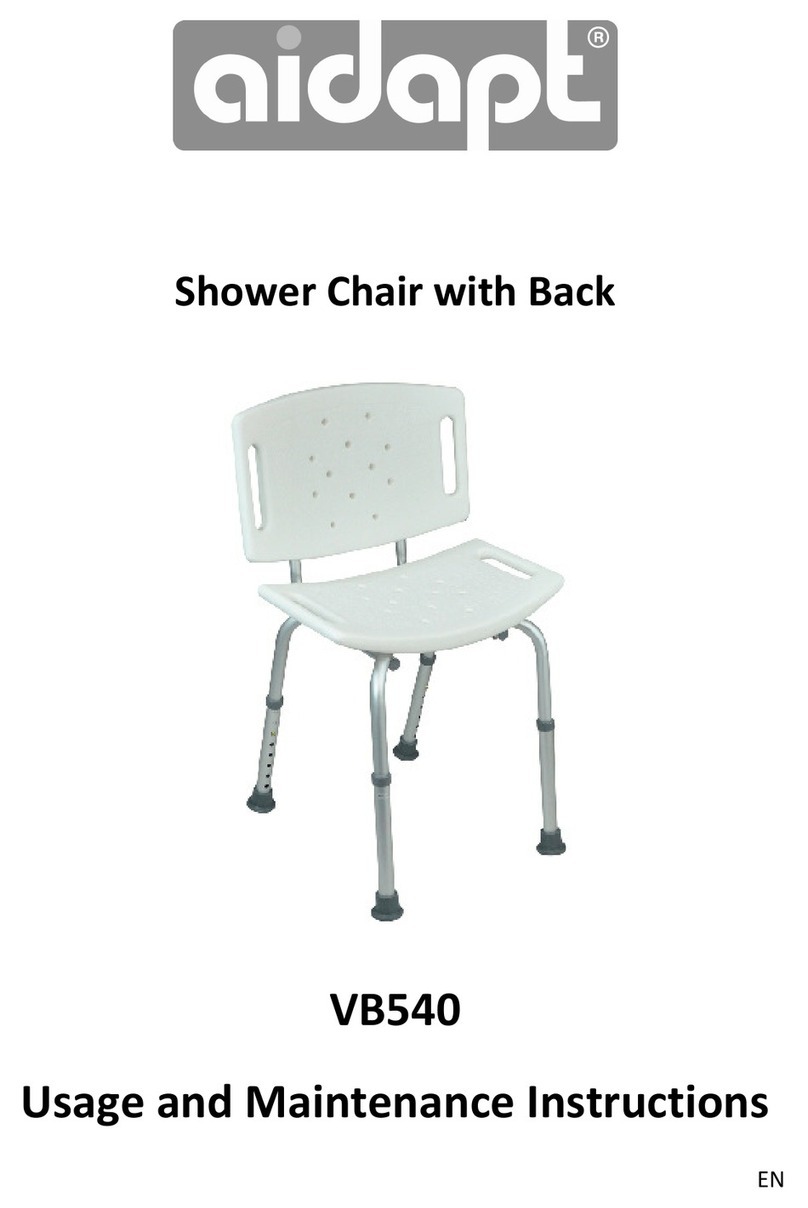
aidapt
aidapt VB540 Usage and maintenance instructions
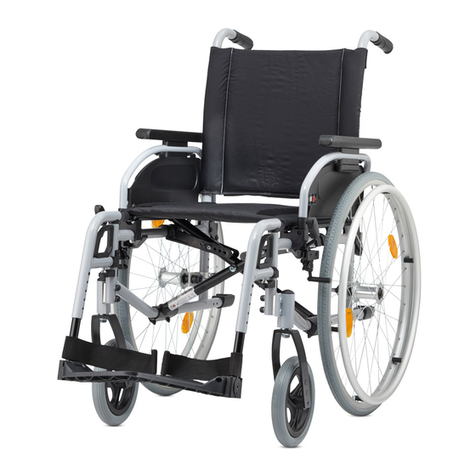
B+B
B+B Pyrostart instruction manual
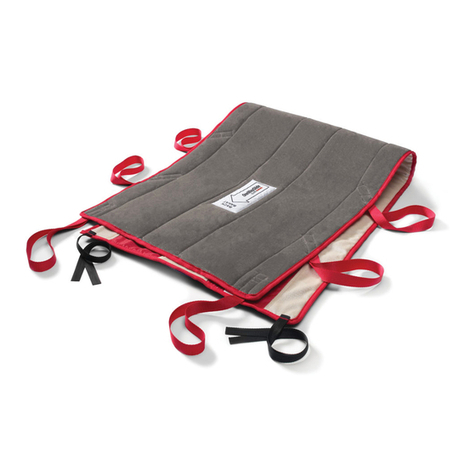
Direct Healthcare Group
Direct Healthcare Group SystemRoMedic OneWaySlide user manual
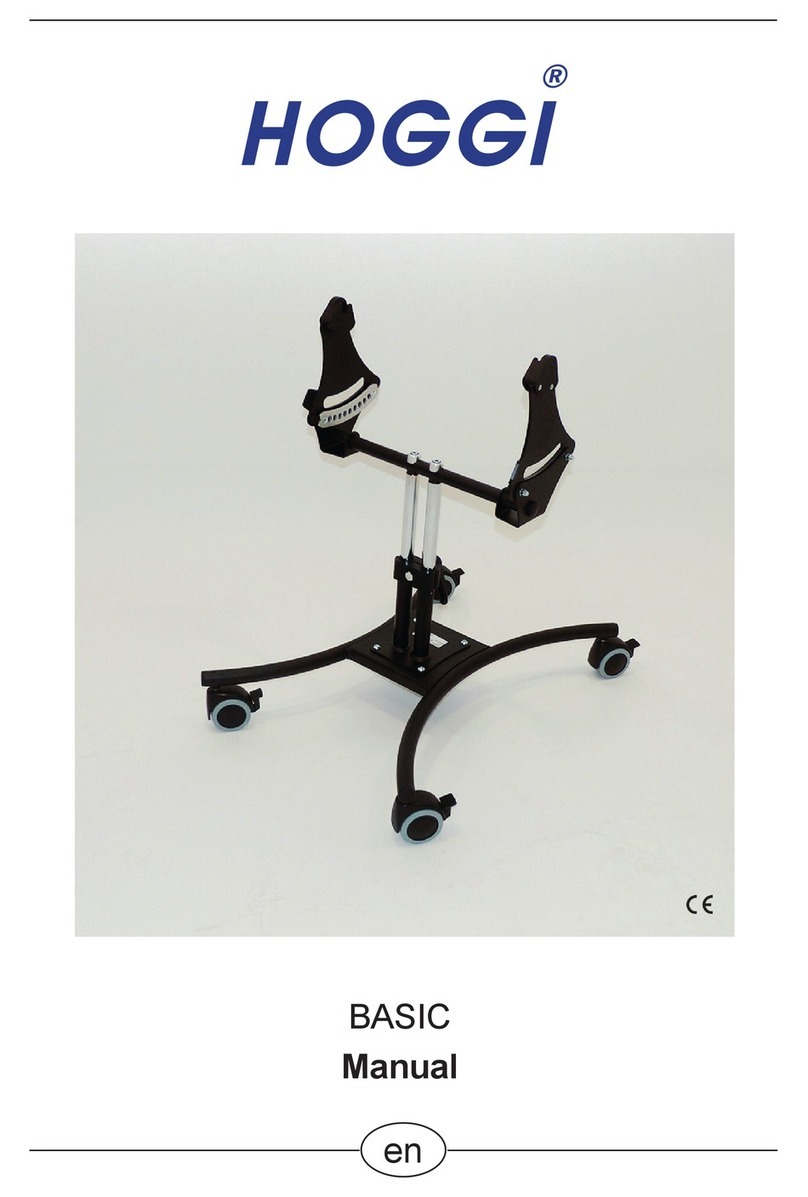
Hoggi
Hoggi Basic manual
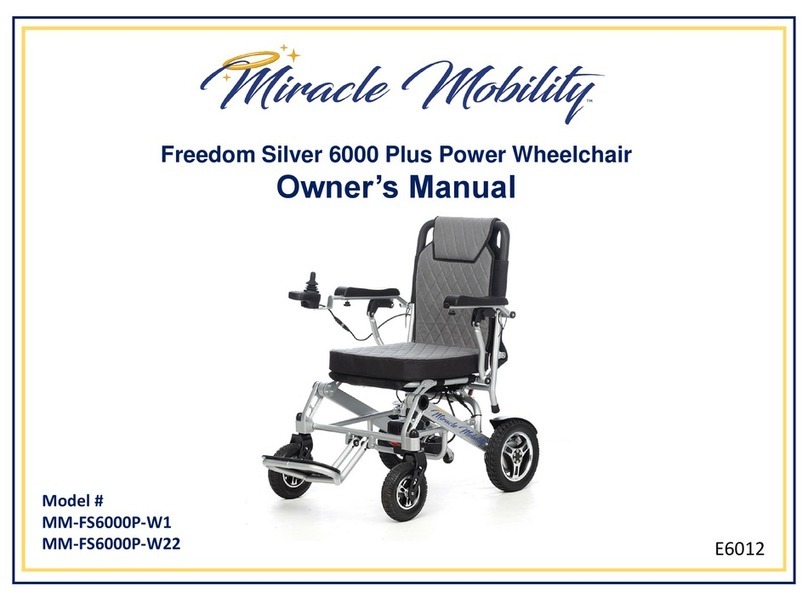
Miracle Mobility
Miracle Mobility Freedom Silver 6000 Plus owner's manual

Jay
Jay J3 BACK Quick reference guide
